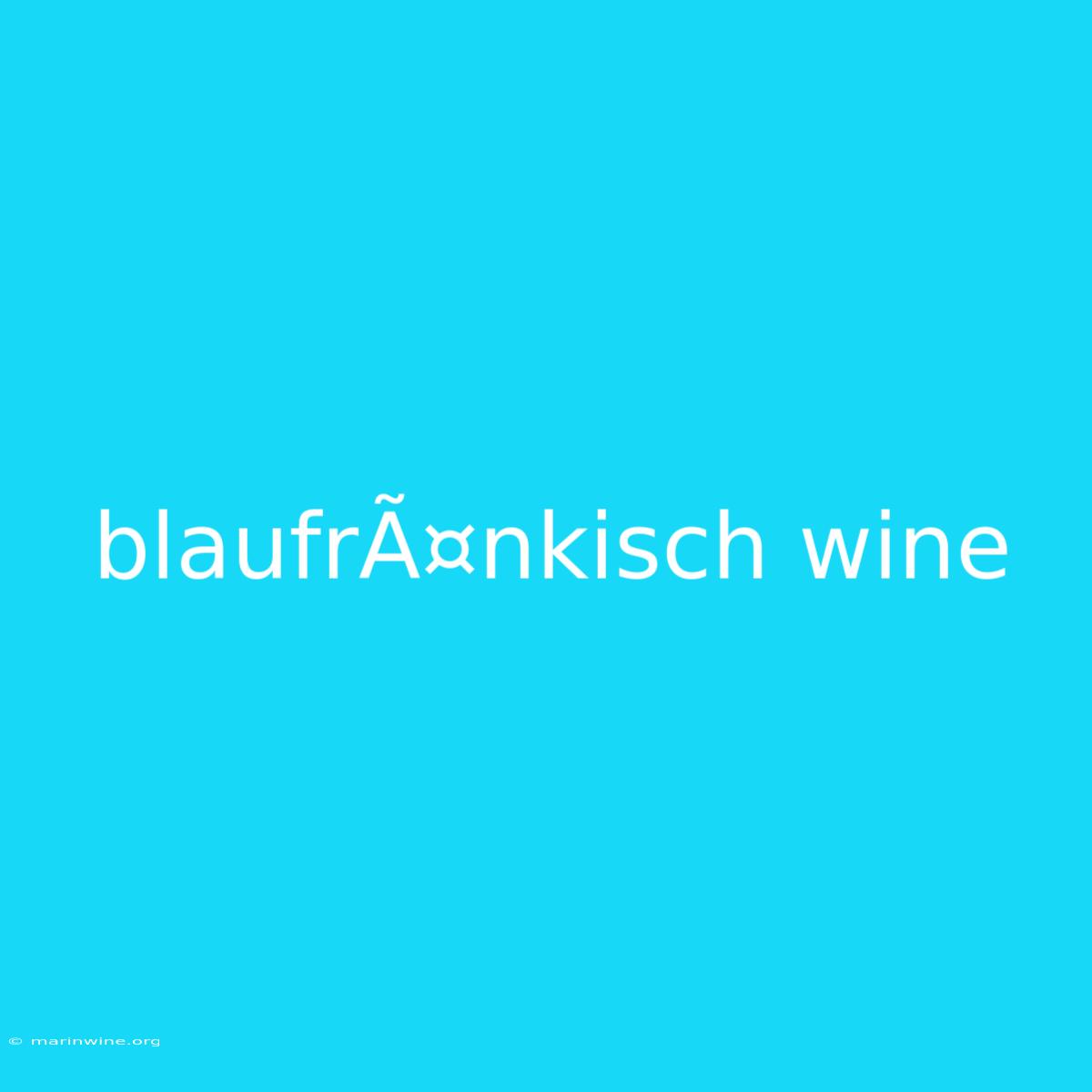Blaufränkisch: Unveiling the Hidden Gem of Austrian Wine
Have you ever heard of Blaufränkisch? This grape, often overshadowed by its more famous Austrian counterpart, Grüner Veltliner, is a powerhouse of flavor and complexity. Don't let its lesser-known status fool you – Blaufränkisch offers a unique journey into the world of Austrian wine.
Why Blaufränkisch Matters:
This red grape variety is a rising star in the world of wine. Its versatility allows it to produce a wide range of styles, from juicy and fruit-forward to full-bodied and age-worthy.
Key Takeaways of Blaufränkisch:
| Key Takeaway | Description |
|---|---|
| Native to Austria | Blaufränkisch is deeply rooted in Austrian winemaking tradition, boasting a rich history in the region. |
| Complex Flavor Profile | Expect notes of dark fruit, spice, and earthy undertones with hints of black pepper, tobacco, and leather. |
| Versatility | Can be produced in various styles, ranging from light and refreshing to structured and age-worthy. |
| Food Pairing Potential | Pairs well with red meats, hearty stews, and roasted vegetables, and complements spicy dishes perfectly. |
Blaufränkisch: A Deeper Dive
The Grape:
Blaufränkisch is a relatively late-ripening grape, known for its thick skins and high acidity. These qualities contribute to its ability to produce wines with intense color, robust tannins, and a long aging potential.
Key Aspects of Blaufränkisch:
- Terroir: Blaufränkisch thrives in cooler climates and well-drained soils. The unique terroir of Austria, with its diverse microclimates and soil compositions, plays a vital role in shaping the character of the wine.
- Winemaking: Winemakers experiment with various techniques to bring out the best in this versatile grape. From traditional methods like aging in oak barrels to modern approaches like carbonic maceration, the possibilities are endless.
- Styles: The style of Blaufränkisch can vary significantly depending on the vineyard, the winemaker's approach, and the aging process. Some Blaufränkisch wines are light and fruity, while others are full-bodied and complex.
- Regions: Blaufränkisch is primarily grown in Austria, particularly in Burgenland, where it finds its ideal growing conditions. However, it is also cultivated in neighboring countries like Hungary, Slovakia, and Germany.
Blaufränkisch's Potential: A New Chapter
The Journey Continues:
As the world embraces natural wine and seeks unique flavor experiences, Blaufränkisch stands poised to make its mark. Its ability to express terroir and showcase complexity, combined with its approachable style, makes it a compelling choice for both wine enthusiasts and newcomers.
The Power of Place:
Blaufränkisch wines, particularly those from Austria, offer a glimpse into the region's unique terroir and winemaking traditions. The interplay between soil, climate, and human intervention creates a symphony of flavors that cannot be replicated elsewhere.
From the Vineyards to the Table:
The versatility of Blaufränkisch extends to the dinner table. Its robust tannins and fruity flavors complement a wide range of dishes, from hearty stews to grilled meats. Exploring the pairing potential of Blaufränkisch opens up a world of culinary possibilities.
Exploring Blaufränkisch: A Journey of Discovery
Understanding Blaufränkisch:
Q: What is the difference between Blaufränkisch and Zweigelt?
A: Both Blaufränkisch and Zweigelt are Austrian red grapes, but Zweigelt is a cross between Blaufränkisch and St. Laurent, resulting in a lighter-bodied, more fruit-forward style. Blaufränkisch tends to have a more structured, complex, and age-worthy character.
Q: What are some key characteristics of Blaufränkisch wine?
A: Expect vibrant acidity, bold tannins, dark fruit flavors like blackberries and plums, and earthy notes of spice and tobacco.
Q: What are some recommended Blaufränkisch wines to try?
A: Look for wines from esteemed Austrian producers, known for their commitment to quality and terroir expression. Some notable examples include:
- Schloss Gobelsburg
- Weingut Hans Igler
- Weingut Poysdorf
- Weingut Heinrich
Tips for Enjoying Blaufränkisch:
- Decant the wine: Allowing Blaufränkisch to breathe in a decanter enhances its aromas and softens its tannins.
- Serve at room temperature: While many reds are enjoyed chilled, Blaufränkisch benefits from being served at room temperature, allowing its flavors to fully develop.
- Pair with hearty dishes: Explore pairings with red meats, roasted vegetables, and spicy cuisines.
Summary of Blaufränkisch:
Blaufränkisch is a remarkable red grape with a distinct Austrian heritage. Its complexity, versatility, and food pairing potential make it a wine worth exploring. Embrace the journey of discovery and experience the hidden gem of Austrian wine – Blaufränkisch.
Closing Message:
Discover the world of Blaufränkisch and embark on a journey of flavor that transcends expectations. This Austrian gem holds a unique place in the world of wine, offering a glimpse into the region's rich history and terroir. Embrace the complexity, savor the character, and elevate your wine experiences with Blaufränkisch.

